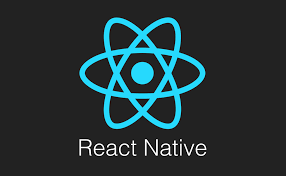React Native vs Flutter: A Pragmatic Guide to Choosing the Right Cross‑Platform Framework
Published
Jul 19, 2025
Author
Lewis
Reading Time
3 minute read
Overview
Cross‑platform development lets you target iOS, Android (and beyond) from a single codebase. Two leading frameworks are:
React Native (JavaScript/TypeScript, Facebook‑maintained)
Flutter (Dart, Google‑maintained)
Both compile to native UI components (React Native via bridges; Flutter with its own rendering engine), but their paradigms, performance profiles, ecosystem maturity, and developer ergonomics differ.
React Native
When to Use
Your team is already skilled in JavaScript/TypeScript and React.
You need rapid iteration with hot‑reload in a web‑focused stack.
You rely on existing native modules or have a large existing React/React Web codebase.
Excels At
Ecosystem & Libraries: Mature community with thousands of modules on npm.
Learning Curve: Familiar React patterns (JSX, hooks, context) translate directly.
Web & Native Synergy: Share logic (state management, validation) between React Web and React Native.
Weaknesses
Performance Overhead: Bridge between JS and native can introduce jank on complex UIs.
Inconsistent APIs: Native modules sometimes lag behind OS updates; you may need custom native code.
UI Parity: Native-component look & feel can drift between platforms and OS versions.
Flutter
When to Use
You’re starting a greenfield project and can adopt Dart.
You need pixel‑perfect, custom UI with complex animations.
You want consistent behavior and appearance across platforms (iOS, Android, web, desktop).
Excels At
Performance: Compiles to native ARM code with Skia rendering, avoiding JS bridges—smooth 60 + fps.
UI Consistency: All widgets are drawn by the framework, so you control every pixel.
Rapid Prototyping: Rich widget set and hot‑reload let you build and tweak sophisticated designs instantly.
Weaknesses
Ecosystem Maturity: Smaller package registry; some platform integrations still experimental.
Binary Size: Flutter apps tend to have a larger minimum footprint.
Dart Adoption: Steeper learning curve if your team isn’t familiar with Dart.
Key Criteria for Choosing
When evaluating React Native versus Flutter, start with your team’s existing skillset; React Native builds on JavaScript/TypeScript and familiar React patterns, whereas Flutter requires learning Dart. Next, consider performance needs: React Native excels with standard user interfaces but can struggle under highly complex animations, while Flutter’s Skia‑based engine delivers consistently high‑performance, custom animations. UI consistency is another factor: React Native relies on platform‑native widgets that may render differently across iOS and Android, whereas Flutter draws every widget itself, ensuring pixel‑perfect parity. In terms of ecosystem and available modules, React Native benefits from a mature, battle‑tested npm registry, whereas Flutter’s package library is still growing. Platform coverage also differs: React Native focuses on iOS and Android (with community‑driven extensions for web and desktop), while Flutter offers first‑class support for web and desktop alongside mobile. Finally, app size matters; React Native typically produces leaner bundles, whereas Flutter apps carry a larger minimum binary footprint.
Recommendations
Choose React Native if your developers live in the JavaScript ecosystem, you need to leverage existing React code or npm packages, and your UI requirements align with standard native components.
Choose Flutter if you require pixel‑perfect custom designs, uncompromised animation performance, or true cross‑platform consistency (including web/desktop), and you’re comfortable investing in Dart.
Image Gallery



Enjoyed this article?
Share it or download for offline reading
Want to Learn More?
Explore more tech insights or discuss your project needs